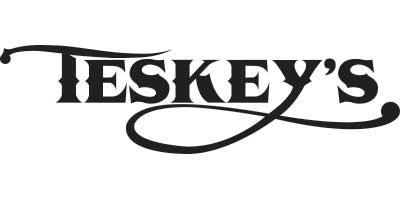Horse Health in Summer Heat
Horses' health in summer is crucial because high temperatures, humidity, and increased insect activity can put horses at greater risk of dehydration, heat stress, and disease. Proper care during the summer months ensures that horses stay comfortable, maintain their performance, and avoid serious health issues such as colic or heatstroke. Providing clean water, shade, and regular health checks, helps prevent these problems and supports the horse’s overall well-being throughout the season.
If a horse becomes dehydrated in the summer heat, it can face serious health consequences. Dehydration reduces the body’s ability to cool itself, leading to heat exhaustion or even heatstroke, which can be life-threatening. It may also cause the horse to lose its appetite, become lethargic, and suffer from reduced performance. In severe cases, dehydration can contribute to colic, a painful and potentially fatal digestive condition. Ensuring horses have constant access to clean, fresh water and monitoring them for signs of overheating are essential to keeping them safe during hot weather.
Preventing heat exhaustion in a horse during hot, humid weather is all about proactive care; always provide unlimited access to clean, cool water, and offering salt or electrolytes to support hydration and prevent heat‑related digestive issues like colic.
-
Offer plentiful shade, run‑in shelters, or UV mesh sheets, along with good airflow or fans so the horse can self‑regulate body temperature comfortably.
-
Avoid riding or hard work during peak heat, by shifting exercise to early mornings or evenings, reducing intensity and including frequent rest breaks in the shade.
-
After any effort, cool the horse slowly by walking, removing tack, and continuous hosing with cool (not ice‑cold) water; research shows whole‑body water application cools far faster than partial spraying.
-
Feed strategies like soaked hay or bran mash help boost hydration, especially if water intake seems inadequate. Check water troughs often, clean and refill frequently to prevent overheating or algal buildup, and ensure multiple sources prevent competition in herd settings.
-
Keep stabled horses ventilated with fans and turn out at night or during cooler hours if shade is limited.
-
Finally, regularly monitor vital signs and behavior like elevated respiration, unusual sweating (too much or too little), lethargy or loss of appetite, and at the first sign of heat stress, move the horse into shade, cool it down, and consult a vet if symptoms don’t rapidly improve.
Electrolytes are absolutely essential during hot summer weather because a horse not only loses large volumes of water through hypertonic sweat, often 10–12 liters per hour in heat, but also massive amounts of sodium, chloride, potassium, magnesium, and calcium, which are vital for muscle and nerve function, fluid balance, and acid-base regulation. Since equine sweat is saltier than the horse’s blood, electrolyte reserves deplete rapidly even at rest in hot conditions, impairing cardiac output, muscle performance and leading to tying-up. Proper supplementation, ideally in isotonic form alongside clean water, helps replenish the specific electrolytes lost, stimulates thirst, and accelerates hydration better than water alone. Without these minerals, horses may experience fatigue, muscle weakness, reduced appetite, blunted thirst response, and increased risk of colic, heat stress, or performance decline, making summer electrolyte support a non‑negotiable part of equine care.
During hot summer months, electrolyte balance becomes critical for horses, not just hydration. Even in light work, a 500 kg horse may sweat 5–7 L per hour, rising to 10–12 L per hour during moderate-intensity exercise in heat, with each liter of sweat carrying about 10 g of combined electrolytes. These electrolytes regulate fluid and acid‑base balance, nerve impulses, and muscle contraction, so losses that aren’t replaced can quickly cause fatigue, poor coordination, performance decline, tying-up, and even colic, especially since equine sweat is saltier than their blood and severely diminishes thirst drive when depleted. In practice, well‑timed supplementation with an electrolyte mix; ideally in feed or as a paste given 1–2 hours before exercise or exposure to extreme heat, and again after work once the horse has taken a few swallows of plain water, which helps prompt thirst and promotes more complete rehydration than water alone.
If your performance horse isn’t sweating (even when others around it are fully sweating or after hard work), it's a serious warning sign. This condition known as anhidrosis or hypohidrosis, means your horse can't effectively cool itself, which raises its core temperature rapidly during exercise. Without sweat evaporation (which accounts for about 65% of heat loss), the horse relies heavily on breathing to stay cool, leading to panting, elevated respiration and heart rate, fatigue, poor performance, and in extreme cases, collapse, seizures, or even death as the temperature climbs above 104°F. Across all cases, the best outcomes are achieved when supplementation is paired with environmental and management changes; like moving the horse to a cooler, drier climate or stall with fans, turning out only in early or evening hours, cold‑hosing post-work, clipping the coat, and feeding higher-fat, lower-starch diets to reduce internal heat production, because true reversal of anhidrosis often depends on supporting the horse as it re-acclimates. It’s critical to work with a veterinarian before starting any protocol: bloodwork to evaluate electrolytes, thyroid, and oxidative markers, and to rule out conditions like Cushing’s or renal disease, ensures that supplementation is appropriate and safe.
